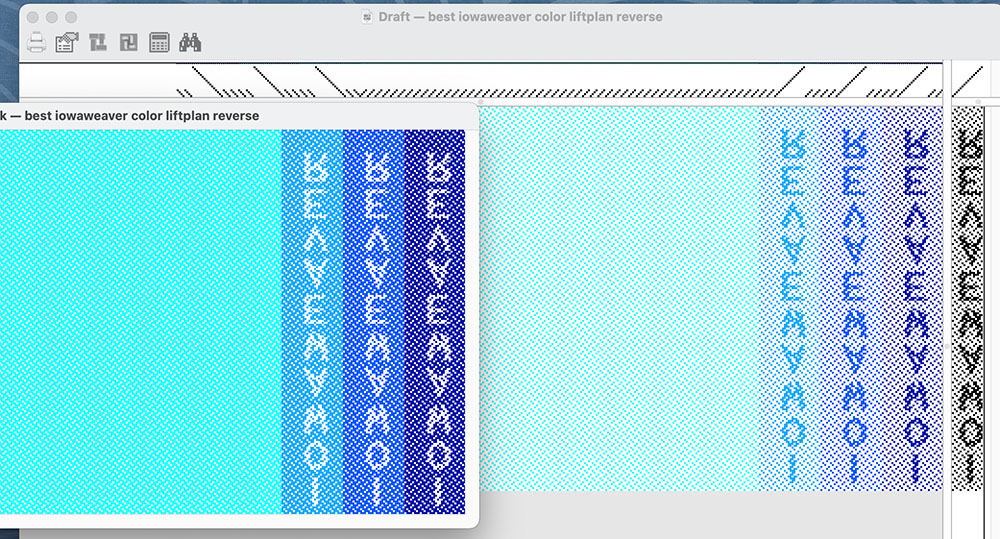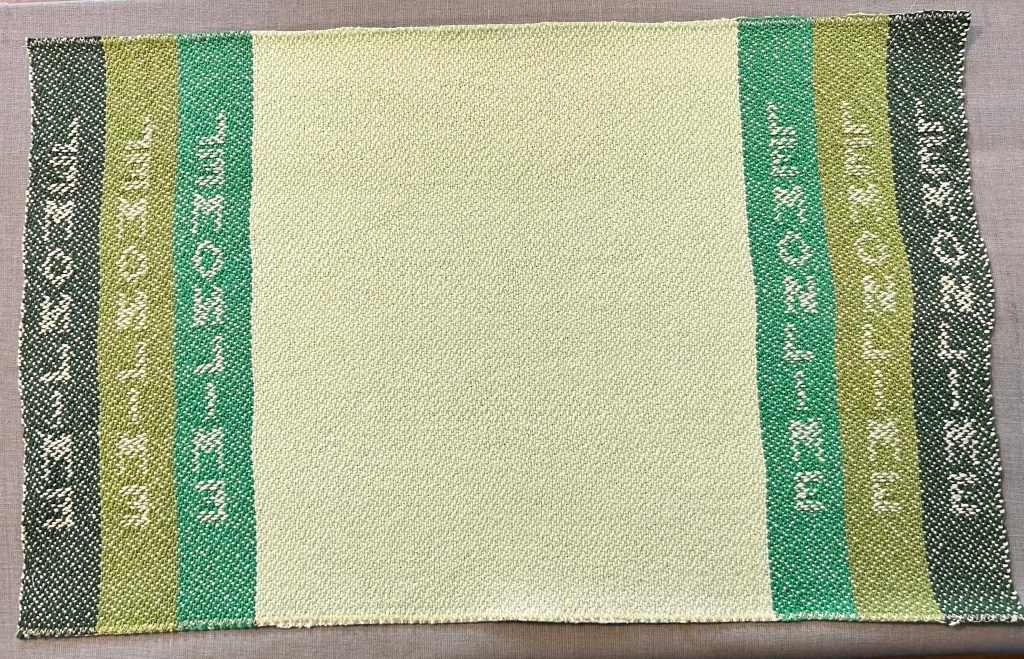My experiments with woven text continue. I wound a warp of 6/2 unmercerized cotton and tied on to the previous warp of 8/2 unmercerized. The 6/2 is noticeably coarser feeling and produced thicker and heavier towels. The weaving proceeded slowly but uneventfully (or so I thought!). I used the fonts that I created from embroidery stitch patterns and they are definitely more readable that the Photoshop fonts.
Below you see the weaving draft for “iowaweaver”, both front and back views.

Below is a quick snap of the “iowaweaver” towel. I was still working out how to space the words in the towel and it ended up longer than I would normally have woven. The letters have issues, but I can live with them. The real problem emerged when I realized that I had three different instances of pulling the wrong lever for a particular pick. This resulted in floats across the back. Longer than I want, but still livable for my personal stash of towels.

Here’s the clue: Below, I drew around one of the places where the mistake occurs. If I had been paying better attention, I would have noticed that the broken twill had turned into a straight twill. Whoops. Also, the bottom of the E was not quite right.

Looking at the draft at the top of this post, we can see that there is nothing wrong with the draft. It wasn’t that. It was me. I wove this little piece at the end of the warp, and I did manage not to make any errors. So it can be done.

I use iWeaveIt on an iPad set up next to my Ashford table loom. I use it when threading with the Threading Tracker and I use it when weaving with the Treadle Tracker. I have found this program to be quite handy, but when I misread the line of levers I am supposed to be pulling, it can be a problem. I briefly (briefly!) thought about the Tempo Treadle. The Tempo Treadle connects to the levers or treadles on a loom with magnets and sends signals to a little box mounted on top of the loom. When you pull the wrong lever, it apparently beeps at you to tell you have made a goof. Then I looked at the price of it for a 16 harness Ashford and …. well.
I’d like to hear from anyone who uses the Tempo Treadle with a table loom and if they love it. It might make me change my mind, but we’ll see.
Meanwhile, I am still thinking of different ways I can use text in weaving, and wondering if this technique is really that useful, or merely a parlor trick that won’t stand the test of time. I think I am going to try placemats out of 5/2 cotton next, sett at 20 epi. here is the design I am thinking of:

The draft on the left is 3/1 broken twill and is the structure that I have used so far for my first towel projects. The draft on the right is 3/1 straight twill. It’s my hope that if I go with the straight twill I won’t have any trouble noticing a mistake in treadling.
Buckle up!


